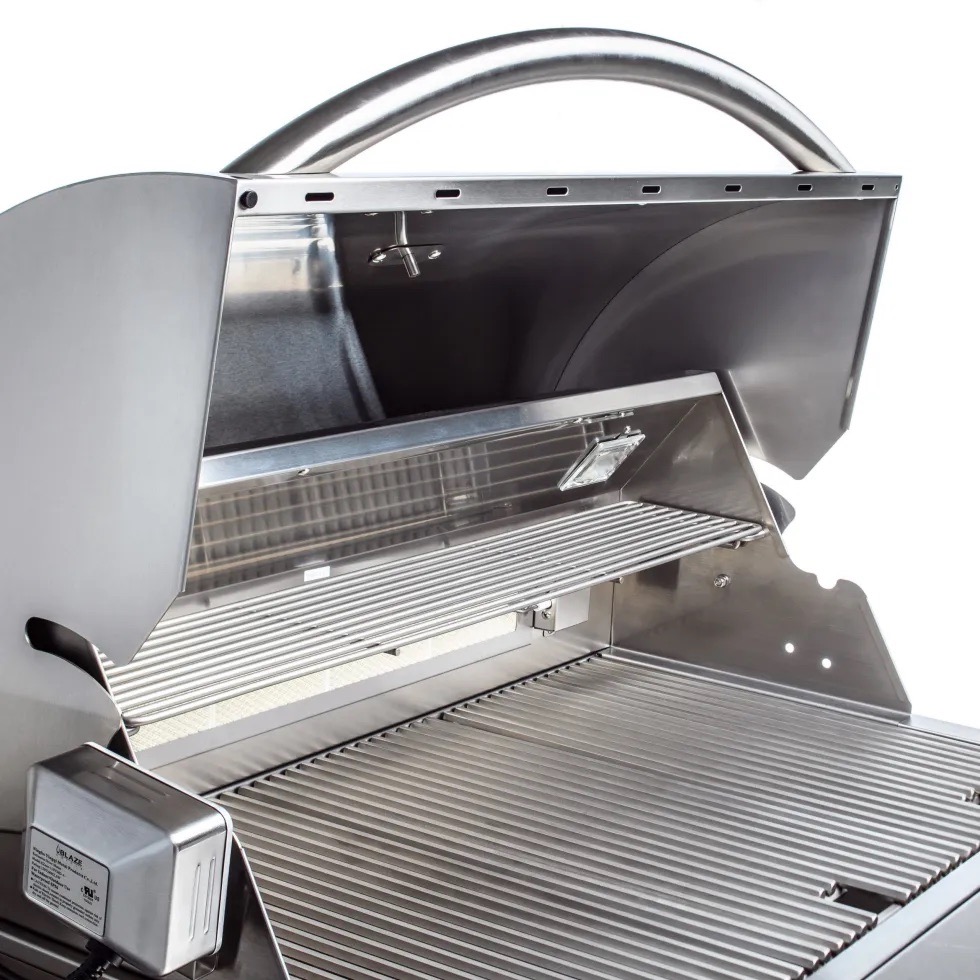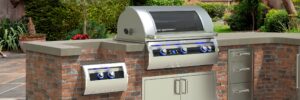Understanding Key Components
Grilling is more than just a cooking method; it’s a beloved culinary tradition that brings people together. Whether you’re a seasoned grill master or just starting out, understanding the main parts and components of a grill is essential for achieving the perfect barbecue. In this guide, we’ll take you on a journey through the different parts of a grill, explaining what each part is, what it looks like, and its purpose in the grilling process.

Cooking Grates

Appearance: Cooking grates are typically made of stainless steel, cast iron, or porcelain-coated metal rods or bars arranged in a grid pattern.
Purpose: These grates are where you place your food for cooking. Beyond this basic function, they play a more critical role in the grilling process. The material they are made from affects the sear and flavor of your food. Cast iron grates, for instance, retain and distribute heat exceptionally well, providing those coveted grill marks and an even cooking surface. Stainless steel grates are known for their durability and resistance to rust, making them a long-lasting choice. Porcelain-coated grates offer a non-stick surface and are easy to clean. The grid pattern also allows for even heat distribution, ensuring that your food cooks uniformly. So, while they may seem like a simple component, cooking grates are the stage where the magic of grilling happens.
Burners

Appearance: Burners are typically made of stainless steel or brass and are placed below the cooking grates. They have rows of small holes or slits along their length.
Purpose: Burners are the heart of a gas grill, responsible for producing the heat needed for cooking. They are connected to the gas source and provide a controlled flame or heat source. However, their role extends beyond merely producing heat. The design of the burners, including the placement of the holes or slits, determines how evenly heat is distributed across the cooking surface. This even heat distribution is crucial for achieving consistent cooking results. Additionally, many modern grills come with multiple burners that can be individually controlled, allowing for different cooking zones with varying temperatures. So, burners not only provide the heat source but also give you control and flexibility in your grilling adventures.
Heat Diffusers
Appearance: Heat diffusers can take the form of metal plates, lava rocks, or ceramic briquettes. They sit above the burners and below the cooking grates.
Purpose: Heat diffusers, often underestimated, are key to ensuring that your food cooks evenly and avoiding flare-ups. They serve as a barrier between the burners and the cooking grates. When the burners heat up, they transfer heat to these diffusers. The diffusers then radiate this heat upward, ensuring that it’s distributed evenly across the cooking surface. This process eliminates hot spots, allowing you to grill delicate items like fish or vegetables without worrying about uneven cooking. Heat diffusers also serve a vital role in preventing flare-ups by catching and diffusing drippings from the food. Without them, the dripping fats could ignite and cause sudden, unwanted flames. So, these seemingly humble components are essential for achieving that perfectly grilled meal.

Lid (or Hood)

Appearance: The lid is a large, hinged metal cover that can be opened and closed. It often has a built-in handle and a thermometer.
Purpose: The lid of your grill is more than just a cover; it’s a crucial component for achieving various cooking techniques. When you close the lid, it creates an enclosed cooking space akin to an oven. This is particularly useful for roasting, smoking, and slow-cooking larger cuts of meat. The lid traps heat and smoke, allowing for indirect cooking, which is essential for low-and-slow barbecue. The built-in thermometer helps you monitor the internal temperature without lifting the lid, which can cause heat fluctuations. So, the lid transforms your grill into a versatile cooking tool, expanding your culinary possibilities beyond traditional grilling.
Drip Pan/Grease Tray
Appearance: Drip pans or grease trays are typically located beneath the cooking grates, either directly above or below the burners. Purpose: These seemingly simple trays play a crucial role in maintaining a clean and safe grilling environment. As you grill, fats, oils, and juices from the cooking food will inevitably drip down. The drip pan or grease tray catches these drippings, preventing them from reaching the burners. This not only prevents flare-ups, which can char your food, but also reduces the risk of dangerous grease fires. Many grills have removable drip pans or trays for easy cleaning, making post-grill maintenance a breeze. Some grills may even come with disposable drip pans, allowing for the most convenient cooking experience.

Control Knobs

Appearance: Control knobs are usually located on the front panel of the grill. They are connected to the burners and can be turned to adjust the heat.
Purpose: Control knobs are your gateway to precision grilling. By turning these knobs, you regulate the flow of gas to the burners, allowing you to control the temperature inside the grill. This level of control is essential for achieving different cooking techniques and perfecting your recipes. Whether you’re searing steaks at high heat or slow-roasting a tender brisket at low heat, control knobs put the power in your hands. The ability to create various heat zones on the grill surface is a valuable tool for any grill enthusiast.
Side Shelves and Prep Areas
Appearance: Many grills come with side shelves or prep areas made of metal, wood, or plastic, attached to the sides of the grill.
Purpose: Side shelves and prep areas provide the practical workspace you need during grilling sessions. They offer a convenient spot for preparing food, holding utensils, sauces, and platters, and even temporarily resting cooked items. Some models come with built-in hooks or tool holders, ensuring that your grilling tools are always within reach. These shelves are not only functional but also add to the overall convenience of your grilling experience.

Wheels and Casters (Freestanding Grills)

Appearance: Wheels or casters are found on the grill’s base, allowing it to be moved easily.
Purpose: Mobility is a valuable feature for freestanding grills. Whether you’re repositioning the grill for better heat control, storing it during inclement weather, or simply wheeling it out for a backyard barbecue, wheels and casters make the process effortless. Look for grills with sturdy, lockable wheels for stability during cooking.
Ash Catcher (Charcoal Grills)
Appearance: In charcoal grills, an ash catcher is often located below the charcoal grate or the firebox.
Purpose: The ash catcher simplifies the cleanup process in charcoal grills. As charcoal burns, it produces ash, which can accumulate and obstruct airflow if not removed. The ash catcher collects these ashes, making disposal quick and easy. This not only aids in maintaining proper heat distribution but also extends the lifespan of your grill.

Understanding the key components of your grill is the first step to becoming a skilled grill master. Whether you prefer the precision of a gas grill or the classic charm of charcoal, each part plays a vital role in creating delicious grilled dishes. So, fire up your grill, experiment with different techniques, and savor the joy of outdoor cooking. Happy grilling!



